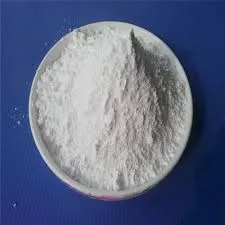The Versatile Uses of Polyacrylamide
Polyacrylamide (PAM) is a synthetic polymer that has garnered significant attention due to its diverse applications across various industries. Known for its remarkable ability to absorb water and form gels, PAM is utilized in areas ranging from agriculture to wastewater treatment, making it a truly versatile compound. This article explores the various uses of polyacrylamide, highlighting its significance in different fields.
Agricultural Applications
In agriculture, polyacrylamide is primarily used as a soil conditioner and a water-retaining agent. When applied to soil, PAM improves water infiltration and retention, leading to enhanced moisture availability for crops. This is particularly beneficial in arid and semi-arid regions where water scarcity is a concern. By reducing soil erosion and promoting better soil structure, polyacrylamide contributes to sustainable agricultural practices. Furthermore, the use of PAM can also minimize nutrient runoff, ensuring that fertilizers remain in the soil where they are needed.
Moreover, PAM is utilized in agriculture for controlling soil erosion. It forms a protective mat that prevents soil particles from being washed away during heavy rains, which helps in conserving soil fertility. Some studies have indicated that the addition of polyacrylamide in irrigation practices can lead to increased crop yields, indicating its importance in modern farming techniques.
Water Treatment
One of the most significant uses of polyacrylamide is in water treatment processes. PAM is employed as a flocculant, facilitating the removal of suspended solids and contaminants from water. It works by binding particles together, resulting in larger aggregates that can be easily separated from the water. This is critically important in municipal water treatment, industrial wastewater management, and even in recreational water facilities such as swimming pools.
In industrial applications, PAM plays a vital role in clarifying water used in paper production, mining, and oil recovery. The oil and gas industry, in particular, uses PAM in hydraulic fracturing processes to enhance the recovery of hydrocarbons. By improving the efficiency of water usage and minimizing environmental impact, polyacrylamide proves to be an indispensable asset in these industries.
polyacrylamide uses

Mining and Mineral Processing
In mineral processing, polyacrylamide is used as a flocculant to aid in the separation of minerals from ore. The polymer helps to improve the efficiency of the sedimentation process, leading to higher recovery rates of valuable minerals. Additionally, PAM is used in tailings management, where it helps to bind tailings particles together, reducing their volume and minimizing the potential for environmental contamination. The use of polyacrylamide in mining not only promotes resource recovery but also contributes to sustainable mining practices by reducing environmental footprints.
Food Processing
Polyacrylamide also finds applications in the food industry, specifically in food processing and preservation. It can be used as a thickening agent or stabilizer in various food products. Its ability to enhance the texture and appearance of food makes it a valuable ingredient in sauces, dressings, and dairy products. However, it is essential to note that the use of PAM in food products must adhere to strict safety regulations due to concerns about potential toxicity.
Biomedical Applications
In the biomedical field, polyacrylamide has gained recognition for its role in the development of hydrogels for drug delivery systems, tissue engineering, and biomedical imaging. The customizable properties of PAM allow researchers to create tailored hydrogels that can respond to physiological changes, making them ideal for controlled drug release. Furthermore, its biocompatibility makes it a suitable material for various biomedical applications, paving the way for advancements in medical technology.
Conclusion
The multifaceted applications of polyacrylamide span several industries, emphasizing its importance in modern society. From enhancing agricultural productivity and improving water treatment processes to contributing to sustainable mining practices and advancing biomedical research, PAM proves to be an invaluable resource. As research continues to explore new applications and improve existing ones, polyacrylamide is poised to remain a key component in addressing various environmental and industrial challenges. The versatility of polyacrylamide indeed highlights the potential of synthetic polymers in creating a more sustainable future.

